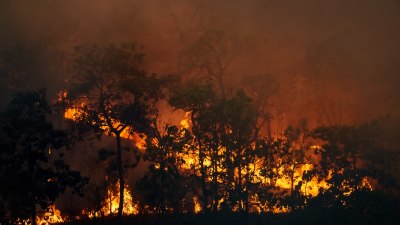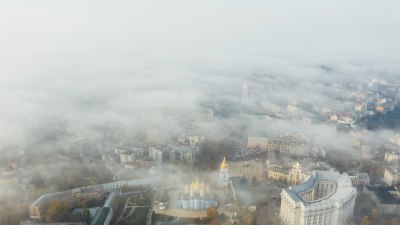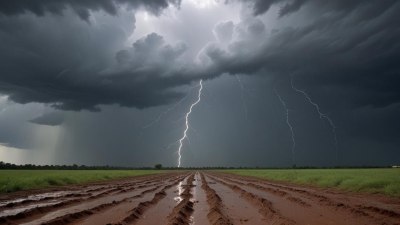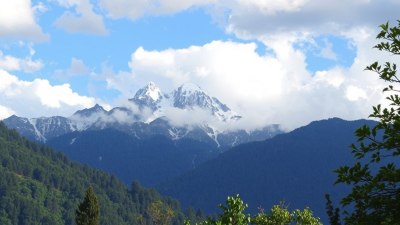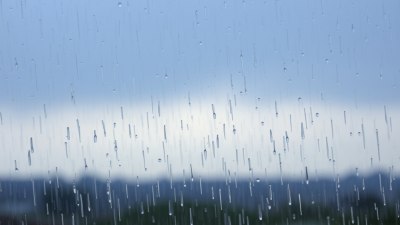What Causes Wind - And Why It's Not Just Air Moving
Explore the science behind wind, its causes, and why it’s more than just moving air. Discover the forces shaping wind and its impact.

Wind is a fundamental element of our planet's weather system, affecting everything from daily weather patterns to the distribution of heat and moisture around the globe. While at first glance wind might seem to be simply air in motion, the causes and effects of wind are far more complex and involve intricate interactions between atmospheric pressure, Earth's rotation, and solar energy. Understanding what causes wind and why it is more than just moving air provides valuable insight into meteorology, climate, and the environment.
The Basics of Wind: Air in Motion
Wind, at its most basic, is air that moves from one place to another. This movement is caused primarily by differences in atmospheric pressure, which is the force exerted by the weight of air above a given point. Air moves from regions of high pressure to regions of low pressure in an attempt to balance these differences, creating the flow we experience as wind.
However, this simple definition does not capture the complexity involved. Air is a fluid composed mainly of nitrogen, oxygen, and trace gases. When air moves, it transports energy, moisture, and particles, influencing weather systems and ecological conditions. Wind patterns are influenced by several factors including temperature variations, Earth's rotation, surface features, and altitude.
Solar Energy: The Primary Driver of Wind
The root cause of wind begins with the Sun. Solar energy heats the Earth's surface unevenly due to the angle of sunlight, surface type, and time of day. Land warms and cools more quickly than water, creating temperature gradients between different areas. Warm air is less dense and rises, creating a low-pressure zone beneath it, while cooler air sinks, resulting in a high-pressure zone.
These pressure differences set air into motion as it moves to equilibrate pressure differences. For example, sea breezes occur during the day because the land heats up faster than the ocean. Warm air over the land rises, and cooler air from over the ocean moves inland to replace it. At night, this process reverses, producing land breezes as the land cools quicker than the water.
Pressure Gradient Force: The Engine Behind Wind
The pressure gradient force (PGF) is the fundamental mechanism that causes air to move. The PGF arises due to spatial differences in atmospheric pressure. On weather maps, these differences are indicated by isobars—lines of equal pressure. When isobars are close together, the pressure gradient is steep, resulting in stronger winds. Where isobars are spaced farther apart, winds tend to be lighter.
The PGF is directed from areas of high pressure to low pressure and initiates the wind's movement. Without it, the atmosphere would be still, with no air circulation. However, pressure gradients are just one piece of the puzzle.
Earth’s Rotation and the Coriolis Effect
Earth's rotation profoundly affects wind direction through the Coriolis effect. As air moves from high to low pressure, the rotation causes the wind to deflect to the right in the Northern Hemisphere and to the left in the Southern Hemisphere. This deflection means wind does not flow directly from high to low pressure but follows a curved path.
The Coriolis effect is crucial for the formation of large-scale weather systems such as cyclones and anticyclones. For example, tropical cyclones spin counterclockwise in the Northern Hemisphere due to this deflection. The effect also helps generate prevailing winds like trade winds and westerlies, which dominate global wind patterns.
Friction and Surface Features
Close to Earth's surface, wind speed and direction are influenced by friction between the moving air and the terrain. Surface roughness, such as forests, buildings, and mountains, slows down wind and alters its path. This frictional force reduces wind speed and can cause turbulence and eddies.
In open areas such as oceans or flat plains, winds can maintain higher speeds and more consistent directions. Conversely, mountainous regions cause winds to funnel through valleys or deflect around peaks, creating complex localized wind patterns like katabatic and anabatic winds. Katabatic winds occur when cold dense air flows downhill under the force of gravity, while anabatic winds are warmer upward flows caused by mountain slopes heating during the day.
Vertical Movements: Updrafts and Downdrafts
While common understanding views wind as horizontal movement of air, vertical air motions play a critical role in wind and weather. Updrafts and downdrafts contribute to the formation of clouds, thunderstorms, and turbulence. Warm air rising from heated surfaces forms updrafts, which can carry moisture upward to form clouds. Conversely, cold air sinking creates downdrafts that can influence weather conditions near the surface.
Vertical air movements also affect the development of wind shear, which is a rapid change in wind speed or direction with altitude. Wind shear is especially important in aviation and severe weather forecasting, as it can influence storm intensity and aircraft safety.
Global Wind Circulation: A Giant Conveyor Belt
On a planetary scale, wind circulations distribute heat and moisture around the globe, balancing the unequal solar heating at different latitudes. This circulation is composed of three main cells in each hemisphere: the Hadley, Ferrel, and Polar cells.
The Hadley cell operates between the equator and about 30 degrees latitude, where warm air rises near the equator creating low pressure and moves poleward. As air cools around 30 degrees latitude, it sinks producing high-pressure zones and forms the trade winds that blow back towards the equator.
The Ferrel cell occurs between 30 and 60 degrees latitude and involves more complex interactions where surface air moves poleward but is deflected eastward by the Coriolis effect, creating prevailing westerlies. The Polar cell operates between 60 degrees latitude and the poles, where cold dense air sinks at the poles and moves equatorward near the surface, forming polar easterlies.
Local Winds: Microclimates and Unique Patterns
Beyond global circulations, local geography can create distinct wind patterns that affect microclimates. Examples include valley and mountain winds, sea and land breezes, and urban wind flows.
In valleys, cool dense air sinks at night, producing down-valley winds, while during the day, warming causes air to rise along slopes creating up-valley winds. Coastal areas experience cycles of sea breezes during the day and land breezes at night dependent on differential heating. Urban areas with high-rises and narrow streets can create wind tunnels, increasing wind speeds and affecting pedestrian comfort.
Wind and Its Environmental Impact
Wind plays a crucial role in shaping ecosystems and human life. It assists in seed dispersal, pollination, and the distribution of nutrients across large areas. In aquatic environments, wind drives waves and currents, influencing marine ecosystems and climate patterns like El Niño and La Niña.
From an environmental management perspective, understanding wind helps in forecasting weather hazards such as hurricanes, dust storms, and wildfire spread. Wind energy harvested through turbines is a growing sustainable power source, converting kinetic energy into electricity without emitting greenhouse gases.
Why Wind Is More Than Just Moving Air
Calling wind “just air moving” overlooks the complexity of the phenomenon and its interconnectedness with atmospheric physics, solar energy, planetary dynamics, and surface interactions. Wind is a visible and tangible representation of the atmosphere’s constant striving for equilibrium, driven by energy imbalances and shaped by the forces of nature.
The movement of air carries energy and momentum and influences climate and habitability. It embodies physical principles such as fluid dynamics, thermodynamics, and planetary motion. Wind’s diversity—from gentle breezes to hurricanes—illustrates its dynamic nature and the range of scales at which atmospheric processes operate.
In sum, wind is a multifaceted natural occurrence. Its causes involve solar heating creating pressure differences, the pressure gradient force moving air, the Coriolis effect curving its path, friction modifying its speed near the surface, and vertical motions contributing to weather phenomena. Together, these factors reveal wind as a complex system integral to Earth's atmospheric balance and life-supporting systems.
Understanding Wind Patterns for a Sustainable Future
As humanity faces climate change, comprehending wind dynamics becomes increasingly important. Changes in temperature gradients, ocean circulation, and atmospheric conditions could alter prevailing winds, impacting weather patterns globally. This may affect agriculture, water availability, renewable energy production, and disaster preparedness.
Forecasting wind patterns accurately is essential for managing these impacts and for planning infrastructure such as wind farms or urban developments. Ongoing research and advances in meteorological modeling are crucial to deepen our understanding and optimize our interaction with this vital natural force.
Applying knowledge about wind can lead to better environmental stewardship, energy efficiency, and disaster mitigation. Recognizing wind as more than just moving air allows us to appreciate its role in the Earth’s system and the delicate balance it helps maintain.
